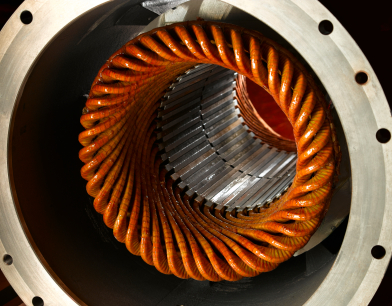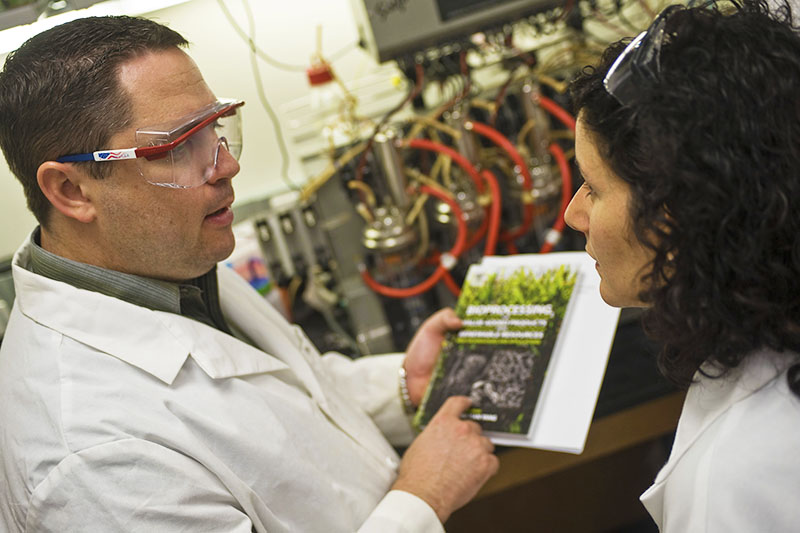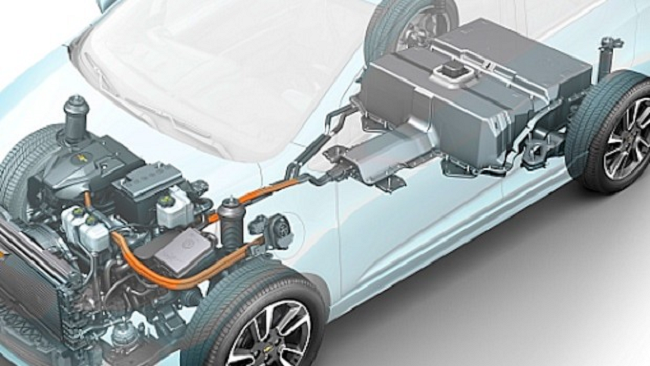
The Advanced Research Project Agency-Energy (ARPA-E) has announced two awards of $5,000 each for solutions submitted in response to its Rare Earth Alternatives in Critical Technologies (REACT) InnoCentive Challenge. ARPA-E’s REACT program is developing cost-effective alternatives to rare earth materials. These materials are elements with unique magnetic properties that are the high-performance magnets required for electric vehicle (EV) motors, wind generators, and many of the technologies that we rely on every day, such as cell phones and laptop computers. The REACT projects that comprise the…

ARPA-E is holding a crowdsourced energy challenge along with InnoCentive and Booz Allen Hamilton. This $10,000 ideation challenge will focus on ARPA-E’s REACT program, which aims to develop cost-effective alternatives to rare earths, the naturally occurring minerals with unique magnetic properties that are used in electric vehicle (EV) motors and wind generators. We recently sat down with Dr. Ping Liu to discuss the challenge. Thank you for joining us. Could you start off by telling us a bit more about the REACT program and the origin of this Challenge? It’s a pleasure to be speaking…

At the southernmost edge of the Georgia Tech campus there stands a building as remarkable for its futuristic exterior as for the next-generation R&D that goes on within its walls. While the university’s Carbon Neutral-Energy Solutions Laboratory (CNES) is covered almost entirely in solar panels, the range of innovative technologies being developed inside embodies the “all of the above” strategy that defines the government agency responsible for funding many of its projects: the Department of Energy’s Advanced Research Projects Agency – Energy (ARPA-E). ARPA-E Acting Director Dr. Cheryl…

This past week, the Energy Department’s Advanced Research Agency-Energy (ARPA-E) celebrated an important milestone: its fifth anniversary. Back in 2009, ARPA-E was a handful of innovative technology leaders and staffers with ambitious ideas about creating an agile government agency that could transform the U.S. energy landscape. Today, ARPA-E is changing the game in energy innovation with a diverse investment portfolio of more than 350 early-stage energy technology projects -- many of which are already showing signs of technical and commercial success. Modeled after the Department…
Since the early 20th century, steel has been the prevailing material of choice for fabricating automobile parts and bodies. Versatile, durable, and relatively inexpensive, steel has enabled the manufacture of safe and reliable vehicles. Unfortunately steel is heavy compared to other metals. Heavier vehicles require more fuel in order to accelerate and maintain their speed, requiring consumers to frequently refuel their cars and trucks. Consequently, a combination of high fuel prices and more stringent U.S. Corporate Average Fuel Economy (CAFE) standards has caused automakers to consider…

Dr. Timothy Heidel discusses the SWITCHES program and its mission to develop next-generation power switching devices that could dramatically improve energy efficiency across a wide range of applications. Question: ARPA-E recently announced that it was funding 14 projects under its SWITCHES program (short for Strategies for Wide Bandgap, Inexpensive Transistors for Controlling High-Efficiency Systems). Why is ARPA-E investing in SWITCHES? Timothy Heidel: SWITCHES is focused on making the delivery of electricity more efficient. Electronic devices including everything from industrial…

Updated July 2016: Learn where Dr. James Klausner is now as he looks back on his experiences at ARPA-E as a Program Director. What was the most interesting or challenging part of program development or management? Serving as an ARPA-E Program Director is a privilege, and program development provides an opportunity to do an in-depth study around a challenging energy problem and identify critical technology gaps that inhibit solutions. The most interesting part of program development at ARPA-E, is reaching out to science and technology experts across the country to find creative ideas to…

Photo Credit: Jeff Fitlow / Rice University Dr. Ramon Gonzalez of ARPA-E discusses the REMOTE program and its innovative approach to methane conversion. Please tell us about your background and experience before coming to ARPA-E. My postdoctoral research is in the emerging field of “metabolic engineering.” This type of engineering leverages the metabolism of microorganisms to make them do something we want them to, that they otherwise wouldn’t do in nature. I started my career in academia at Iowa State University which, at the time, was one of the few places interested in renewable…

Dr. Ping Liu of ARPA-E discusses the RANGE program and its innovative approach to energy storage for electric vehicles. Please tell us about your background and experience before coming to ARPA-E. I was trained as an electrochemist and have being doing battery research for many years. Before coming to ARPA-E last year, I was involved in energy storage work for HRL in Malibu, CA – a lab that performs research and development for organizations like General Motors, Boeing, and the federal government. At HRL I was involved with energy storage for electric vehicles and hybrids, as well as…
ARPA-E sat down with Pete McGrail, Laboratory Fellow at Pacific Northwest National Laboratory (PNNL), to talk about PNNL’s adsorption chiller work and how a more efficient air conditioner that could help the U.S. military cut its fuel costs. Tell us a little about your background and your work at PNNL. Pete McGrail: I came to PNNL after my post-graduate work at the University of Missouri -- that was about 30 years ago. Since the 1990s, I have been working on nano-structured materials. The initial application for these materials was for hydrogen storage and separating carbon from gas…
